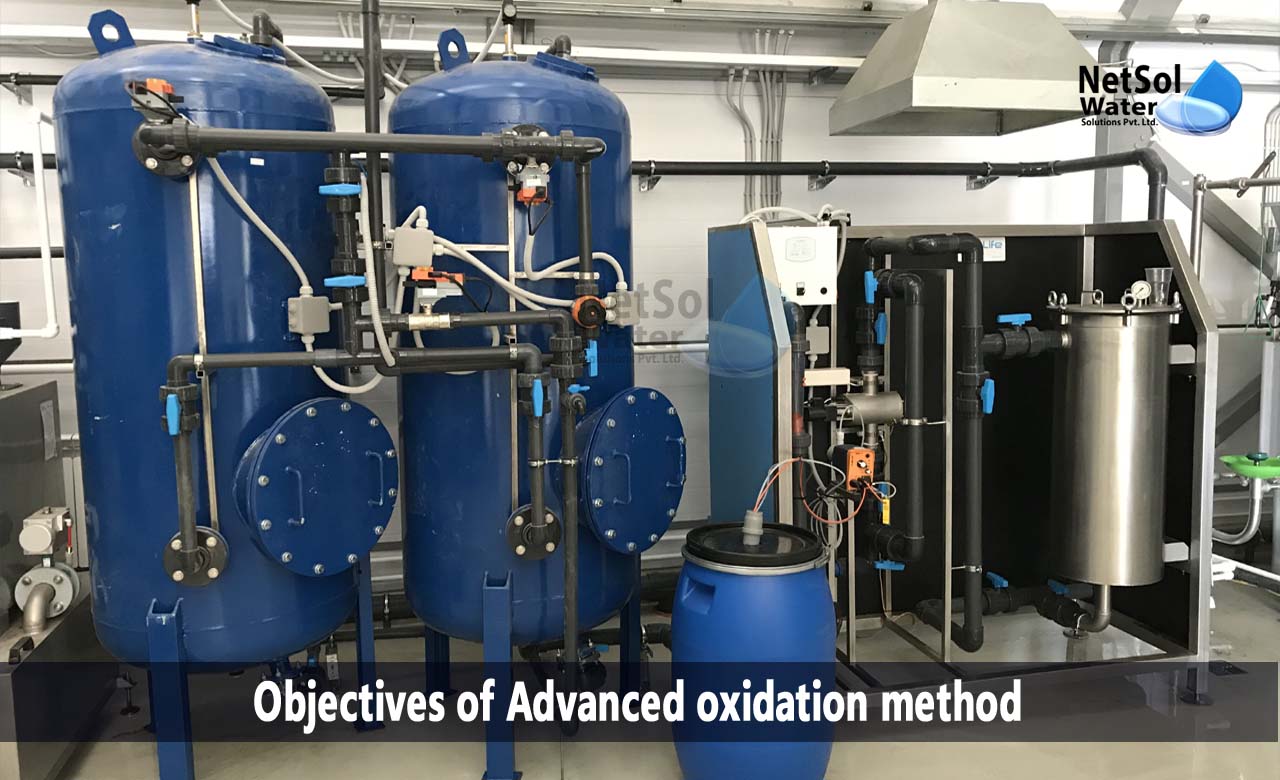AOPs, or advanced oxidation processes, are a group of chemical treatment techniques, used to oxidise organic and occasionally inorganic compounds from water and wastewater, through interactions involving hydroxyl radicals (OH).
However, this phrase is typically used to refer more specifically to a subset of these chemical processes which use ozone (O3), hydrogen peroxide (H2O2), and UV radiation in real-world wastewater treatment applications.
Let’s look at the objectives of advanced oxidation methods.
AOPs are dependent on the in-situ hydroxyl radical (OH) generation
Since, they are the most potent oxidants that can be used in water, these reactive species are able to virtually oxidise any component that is present in the water matrix, frequently at a diffusion-controlled reaction speed.
As a result, pollutants will be promptly and effectively broken and transformed into small inorganic molecules because once created, OH reacts in an unselective manner. One or more primary oxidants, such as ozone, hydrogen peroxide, and oxygen, as well as energy sources, such as UV radiation, or catalysts, are used to create hydroxyl radicals (e.g. titanium dioxide). To achieve the highest possible •OH yield, precise, pre-programmed dosages, sequences, and combinations of these reagents are used.
Advantages of advanced oxidation process
AOPs have been dubbed the "water treatment techniques of the 21st century" since they can, in general, reduce the concentration of contaminants from several hundred parts per million (ppm), to less than 5 ppb and hence dramatically lower COD and TOC.
The AOP process is particularly helpful for removing biologically harmful or non-biodegradable substances from wastewater, including volatile organic compounds (VOC), pesticides, aromatics, and petroleum components.
The contaminating materials go through a process called mineralization, in which a considerable portion of them are transformed into stable inorganic components like water, carbon dioxide, and salts. AOP processes for wastewater purification include reducing chemical pollutants and toxicity to the point, where the treated water is no longer harmful.
Application of Advanced oxidation process
Wastewater from several kinds of heavy industries is typically cleaned using the AOP (Advanced Oxidation Processes), which removes toxins such as:
· Chemical Industry
· Petrochemical Industry
· Plastic Industry
· Pharmaceutical Industry
· Food Processing Industry
· Textile and dyeing industry
· RO & NF brine streams
· Metal and metal plating industry
What are the Objectives of Advanced oxidation method (AOP)?
In order to lower COD/BOD levels and eliminate both organic and oxidisable inorganic components, advanced chemical oxidation procedures utilise (chemical) oxidants. Organic molecules can be entirely converted by the mechanisms into carbon dioxide and water.
Chemical oxidation methods use air, hydrogen peroxide, ozone, combined ozone, peroxide as well as ultrasonic and ultraviolet radiation, for increased oxidation. Advanced Oxidation Processes are especially suitable for effluents comprising hazardous, non-biodegradable, or refractory compounds.
Compared to biological or physical processes, the processes have a number of benefits, including:
· Process functionality (No biological process)
· A very small footprint, unattended operation
· Not having secondary wastes (sludge)
· The capacity to manage varying compositions and flow rates
Conventional oxidation techniques frequently have significant start-up and on-going costs, and are ineffective at lowering COD contamination in wastewater. Traditional oxidation techniques, such as biological treatment, require very large footprints and extensive operation cycles (up to 48 hours).
Key stages of the AOP Process
The following are the key steps in the process:
· AOP Electro-catalytic reactor
· DAF or Lamella clarification, depending on the level of TSS (Total Suspended Solids) and the need for pH adjustment
· Sedimentation of suspended solids or filtering, as appropriate. At this point, COD has is lowered by 30–60%
· Post-filtration to remove any suspended catalyst particles
· AOP catalytic oxidation in a tank or an underground pit. At this point, the liquid is transparent with little to no colour and a COD decrease of 75–90%
· To remove 95% to 100% of COD, use AOP Photo-catalytic UV, UV + Hydrogen Peroxide, Ozonation, or a combination of these
Manufacturer of high-quality water treatment products!
We at Netsol Water have the knowledge and water treatment products, necessary to assist you in managing the water treatment plants across your facilities.
Furthermore, if you need any advice on water or a wastewater treatment problem, we can guide you towards the best water purification system for your requirements, including RO Plants, water softeners, WTPs, STPs, ETPs, and much more.
Netsol Water is Greater Noida-based leading water & wastewater treatment plant manufacturer. We are industry's most demanding company based on client review and work quality. We are known as best commercial RO plant manufacturers, industrial RO plant manufacturer, sewage treatment plant manufacturer, Water Softener Plant Manufacturers and effluent treatment plant manufacturers. Apart from this 24x7 customer support is our USP. Call on +91-9650608473, or write us at enquiry@netsolwater.com for any support, inquiry or product-purchase related query.



